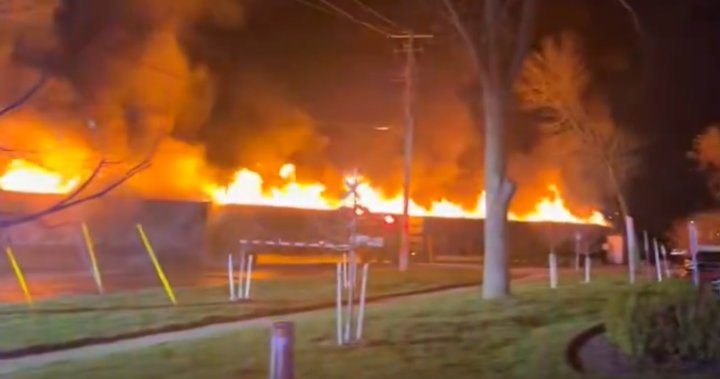The Transportation Safety Board has launched an investigation into a train that caught fire while travelling through London, Ontario last month. The CPKC train was seen travelling eastward through the city, shocking onlookers and prompting the fire department to urge residents to stay indoors. The fire was eventually brought under control after the train came to a stop near Waterloo and Pall Mall streets. Firefighters continued to douse hot spots on the train, which was carrying used wooden railway ties. Luckily, no injuries were reported.
After gathering additional information and evaluating evidence, the Transportation Safety Board confirmed that a formal investigation will take place. The investigation will be classified as Class 5, meaning it is a lower-level investigation that does not require a comprehensive report to be issued. However, data on Class 5 occurrences will be recorded for potential future safety analysis, statistical reporting, or archival purposes. The likely cause of the fire was identified as sparks from the locomotive exhaust, along with air flow, which caused flames to spread to each subsequent train car.
Preliminary findings from the investigation suggest that the train crew became aware of the fire between Caradoc and London, with Caradoc being approximately 30 km west of London. Upon discovering the fire, the crew took immediate action, stopping the train, isolating the six open top gondola cars, and pulling them to a safe location. The crew then separated the locomotives from the gondola cars. The London fire department commended the CPKC rail crew for their decisive actions in responding to the situation.
Fire crews worked in conjunction with CPR personnel to bring the fire under control and continued to dose smouldering wooden railway ties at Adelaide Yard. The London Fire Department used a RosenbauerGroup T-Rex Aerial Truck to help battle the flames. The fire was successfully contained, and the smouldering train was moved to a railway yard for further inspection and cleanup. The situation in London caused a temporary disruption, but no injuries were reported as a result of the incident.
The TSB investigation will help determine the exact cause of the fire on the CPKC train and evaluate the response of the train crew. By analyzing the data and evidence from the incident, the TSB aims to improve safety measures and prevent similar occurrences in the future. The findings of the investigation will be used for future safety analysis, statistical reporting, and archival purposes. The TSB’s decision to move forward with a formal investigation demonstrates the importance of ensuring the safety and security of transportation systems, as well as the prompt and effective response to emergencies. The incident serves as a reminder of the risks associated with transporting goods by rail and the need for rigorous safety protocols and emergency preparedness among transportation companies and emergency response agencies.
You Might Like
© 2024 West Observer. All Rights Reserved.


